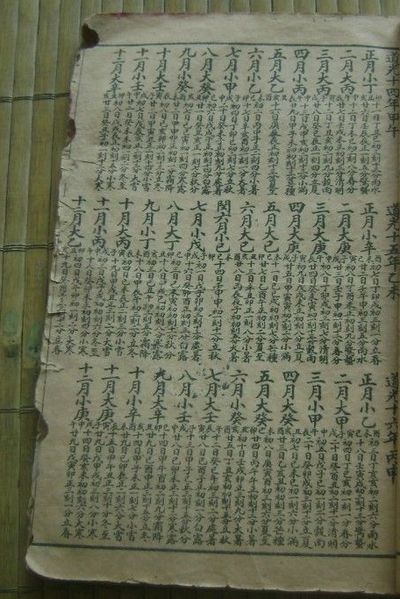A lunisolar calendar is a calendar in many cultures, incorporating lunar calendars and solar calendars. The date of lunisolar calendars therefore indicates both the Moon phase and the time of the solar year, that is the position of the Sun in the Earth's sky. If the sidereal year is used instead of the solar year, then the calendar will predict the constellation near which the full moon may occur. As with all calendars which divide the year into months there is an additional requirement that the year have a whole number of months. In some case ordinary years consist of twelve months but every second or third year is an embolismic year, which adds a thirteenth intercalary, embolismic, or leap month.
Record of the Chinese lunisolar calendar for 1834, 1835, and 1836 during the Qing dynasty under the Daoguang Emperor's Reign (道光十四年,道光十五年,道光十六年)
1729 Japanese calendar, which used the Jōkyō calendar procedure, published by Ise Grand Shrine
A calendar is a system of organizing days. This is done by giving names to periods of time, typically days, weeks, months and years. A date is the designation of a single and specific day within such a system. A calendar is also a physical record of such a system. A calendar can also mean a list of planned events, such as a court calendar, or a partly or fully chronological list of documents, such as a calendar of wills.
Modern day Indonesian Gregorian calendar for a Catholic church
British calendar, 1851, gilt bronze and malachite, height: 20.3 cm, Metropolitan Museum of Art (New York City)
Equinox seen from the astronomic calendar of Pizzo Vento at Fondachelli Fantina, Sicily
Catalan early 20th century perpetual calendar






